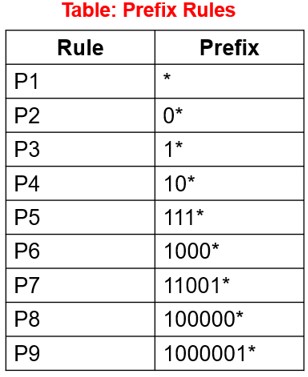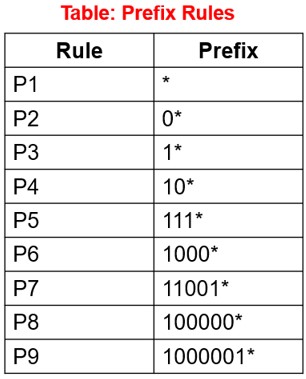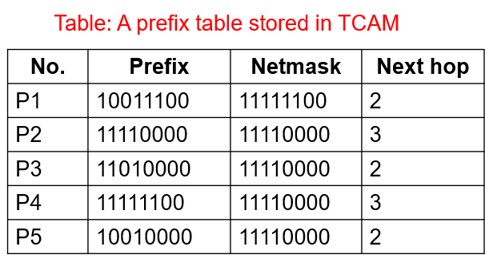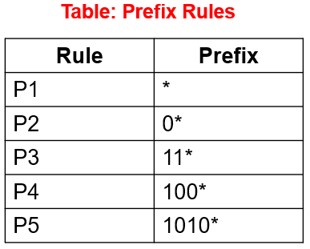NPTEL Advanced Computer Networks Week 1,2 Assignment Answer

NPTEL Advanced Computer Networks Week 1 Assignment Answer 2023
1. Which of the following operations is/are performed when packets enter the ingress interface?
a. Consult FIB and determine O/P interface
b. Add link layer header
c. TTL Decrement
d. Send it to correct O/P port
Answer :- Consult FIB and determine O/P interface , TTL Decrement
2. Which of the following statements are true?
a. The control plane operations are performed on every packet arriving at a router
b. The datapath functions like output link scheduling and forwarding decision are performed on every packet that passes through the router
c. The control plane functions are not performed on each arriving individual packet
d. The datapath functions like output link scheduling and forwarding decision are not performed on every datagram that passes through the router
Answer :- The datapath functions like output link scheduling and forwarding decision are performed on every packet that passes through the router , The control plane functions are not performed on each arriving individual packet
3. Assume an Internet Service Provider (ISP) has the following range of CIDR-based IP addresses available to it: 200.200.128.0/19. The ISP wants to give half of these addresses to organization ABC, a quarter to organization XYZ, and keep the rest for itself. Which of the following is a reasonable allocation of IP addresses to ABC and XYZ?
a. 200.200.144.0/20 and 200.200.128.0/21
b. 200.200.144.0/22 and 200.200.136.0/21
c. 200.200.128.0/20 and 200.200.128.0/21
d. 200.200.136.0/20 and 200.200.136.0/21
Answer :- 200.200.144.0/20 and 200.200.128.0/21
4. Which of the following are the design goals for the core routers to meet the increasing Internet traffic?
a. Packet forwarding performance
b. Scalability
c. Modular degradation
d. High Availability
Answer :- Packet forwarding performance , Scalability , High Availability
5. What are the components of the Line cards?
a. CPU
b. Transponder
c. Network processor
d. Router controller
Answer :- CPU , Transponder , Network processor
6. What is the role of the Router’s forwarding engine?
a. Reserving resources
b. Processing packet headers
c. Network maintenance and administrative tasks
d. Handling packets
Answer :- Processing packet headers
7. Which of the following IP prefixes corresponds to a Class B address?
a. 10000010 01010110*
b. 11011101 01010110*
c. 10001110 00101010*
d. 00001010 00001010*
Answer :- 10000010 01010110* , 10001110 00101010*
8. A network with the IP address 10.10.30.0/28. How many bits represent the host in this IP prefix?
a. 4 bits
b. 8 bits
c. 16 bits
d. 28 bits
Answer :- 4 bits
9. Which among the following telecommunication companies fall into the category of Tier 1 ISP (Internet Service Provider)?
a. AT&T
b. Verizon
c. ACT Fibernet
d. Telstra
Answer :- AT&T, Verizon, Telstra
10. A small organization with 60 employees uses a Class C network. How many IP addresses is the organization wasting?
a. 196
b. 194
c. 192
d. 128
e. 64
Answer :- 194
NPTEL Advanced Computer Networks Week 2 Assignment Answer 2023
1. Which among the following is true when the trie constructed with a set of prefixes resulted into a full binary tree?
- Only binary trie has the best lookup and update complexity
- Only path compressed trie has the best lookup and update complexity
- Both binary and path-compressed tries have the same lookup and update complexity
- Binary trie and path-compressed tries have the same lookup complexity but different update complexity.
Answer :- Both binary and path-compressed tries have the same lookup and update complexity
2. Given a routing table having 5 prefixes with prefix length of 0, 2, 4, 6, 8 respectively, ……… pointer references are required in the worst case for the binary trie
- 4
- 8
- 6
- 16
Answer :- 8
3. In which case will a path-compressed trie resemble a regular binary trie?
- When trie is sparse
- When trie is dense
- When trie is almost complete
- When trie is full
Answer :- When trie is full
4. Consider the prefix database table shown below; what is the height of the trie constructed using a 1-bit binary trie?
Note: The height of the root node (P1) is 1.
- 6
- 7
- 8
- 9
Answer :- 8
5. Consider the prefix database table shown below; what is the height of the trie constructed using a Path-Compressed Trie?
Note: The height of the root node (P1) is 1.
- 6
- 7
- 8
- 9
Answer :- 6
6. Consider the prefix table shown below; which of the following prefixes should be merged to reduce the size of the table for storage in TCAM?

- P1 and P2
- P1 and P3
- P1 and P5
- P2 and P4
Answer :- P1 and P5 , P2 and P4
7. Consider the prefix database table shown below; what is the route lookup sequence to reach the destination address 10100000 in 1-bit binary trie?

- Right, Left, Left, Right
- Right, Left, Right, Right
- Right, Left, Right, Left
- Left, Right, Left, Right
Answer :- Right, Left, Right, Left
8. Which of the following statements about the DIR-24-8-BASIC hardware-based routing lookup algorithm is/are correct?
- If the length of the prefix P is less than 25 bits, the first bit of the entry is set to one in TBL24.
- If the length of the prefix P is less than 24 bits, the first bit of the entry is set to zero in TBL24.
- If the length of the prefix P is greater than 24 bits, the first bit of the entry is set to one in TBL24.
- If the length of the prefix P is greater than 24 bits, the first bit of the entry is set to zero in TBL24.
Answer :- If the length of the prefix P is less than 24 bits, the first bit of the entry is set to zero in TBL24. , If the length of the prefix P is greater than 24 bits, the first bit of the entry is set to one in TBL24.
9. Consider the following scenarios for how the DIR-24-8 algorithm performs route lookups using two tables.
Assume the routes listed below are already in the table: 10.54/16 (1), 10.54.34/24 (2), and 10.54.34.192/26 (3).
The first route requires entries in TBL24 (First Table), while the second and third routes require entries in TBLlong (Second Table).
Which of the following statements is/are correct based on the above scenario?
- If a packet arrives with the destination address 10.54.22.147, the table will return an entry with the correct next hop (1)
- If a packet arrives with the destination address 10.54.34.23, the table will return an entry with the correct next hop (2)
- If a packet arrives with the destination address 10.54.34.15, the table will return an entry with the correct next hop (1)
- If a packet arrives with the destination address 10.54.39.128, the table will return an entry with the correct next hop (1)
Answer :- If a packet arrives with the destination address 10.54.22.147, the table will return an entry with the correct next hop (1) , If a packet arrives with the destination address 10.54.34.23, the table will return an entry with the correct next hop (2) , If a packet arrives with the destination address 10.54.39.128, the table will return an entry with the correct next hop (1)
10. Which of the statements below is/are correct?
- Path-compressed trie is an efficient way to compress a trie when nodes are sparsely populated.
- Level compression trie is an efficient way to compress a trie when nodes are densely populated.
- Path-compressed trie is an efficient way to compress a trie when nodes are densely populated.
- Multi-bit trie can improve route lookup performance.
Answer :- Path-compressed trie is an efficient way to compress a trie when nodes are sparsely populated., Level compression trie is an efficient way to compress a trie when nodes are densely populated., Multi-bit trie can improve route lookup performance.






